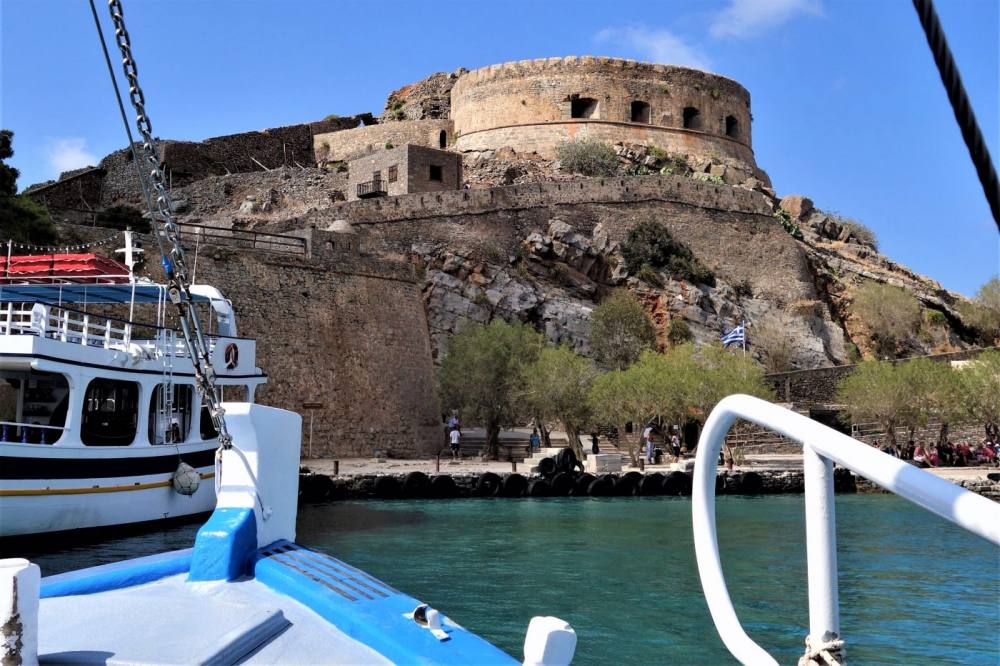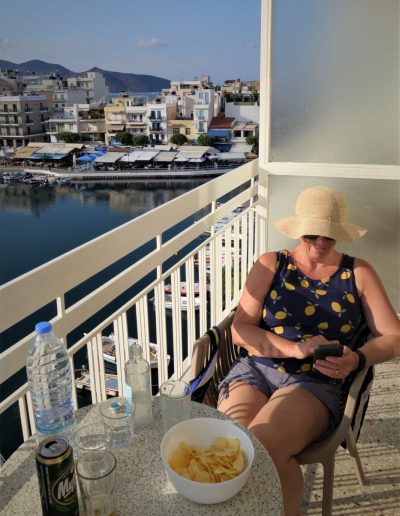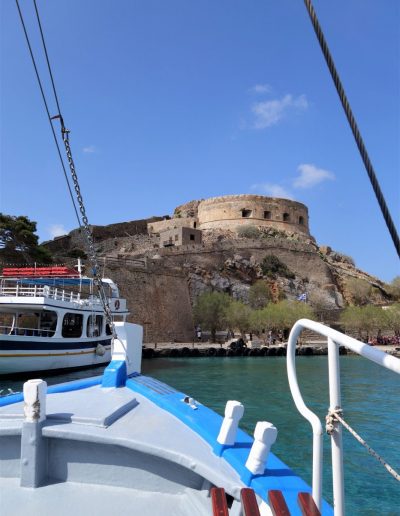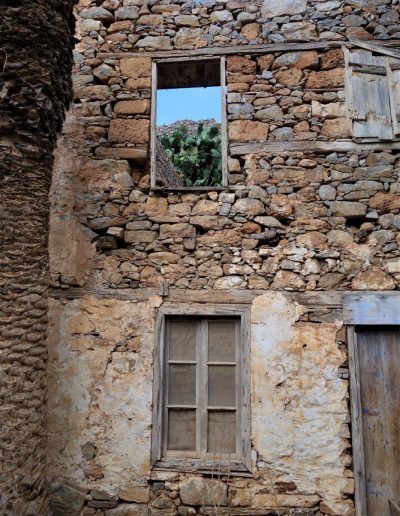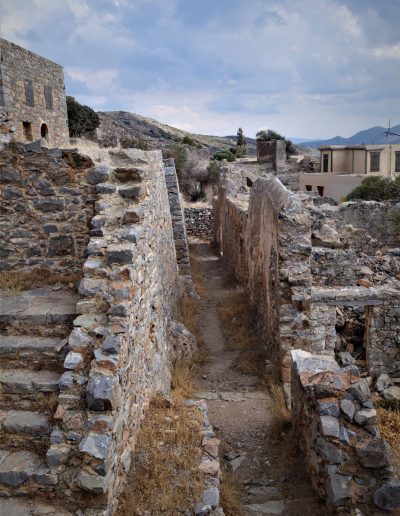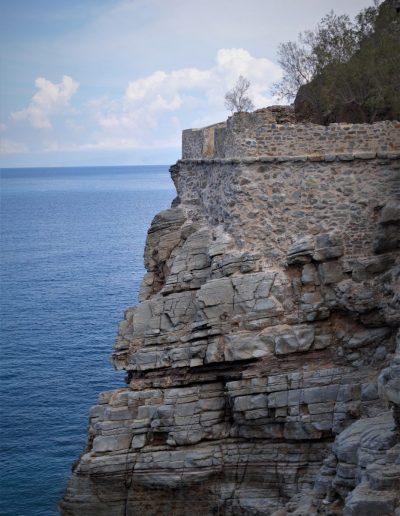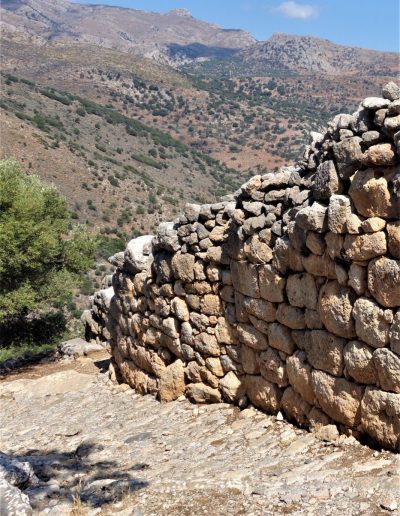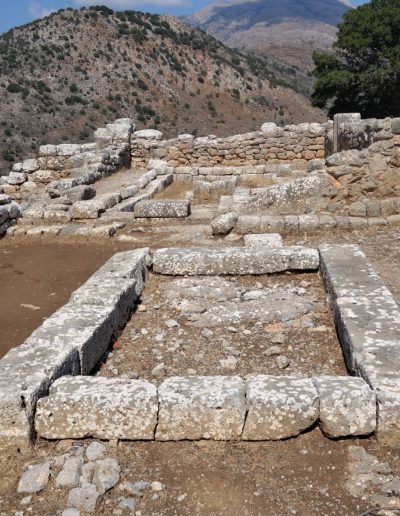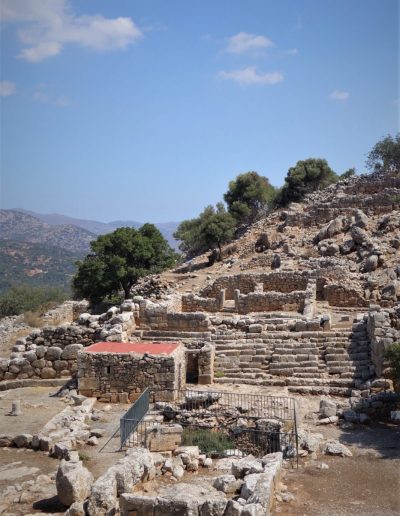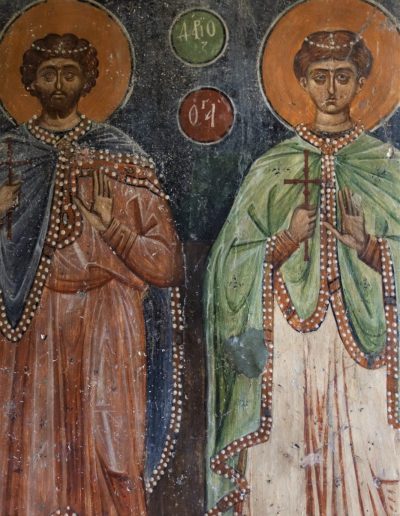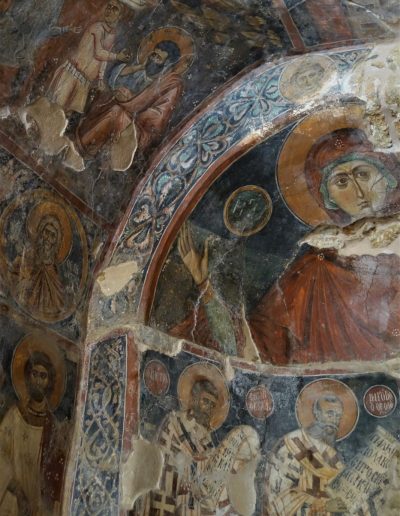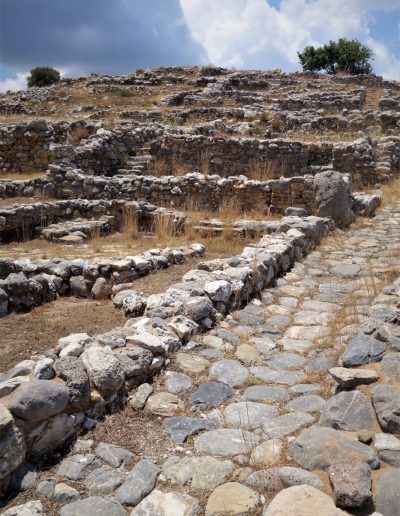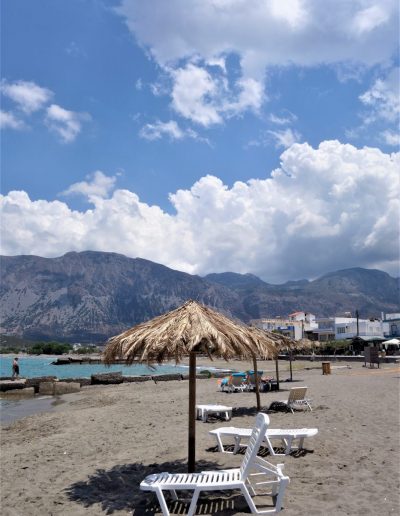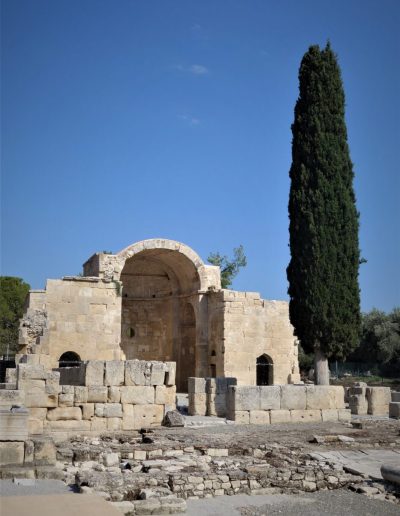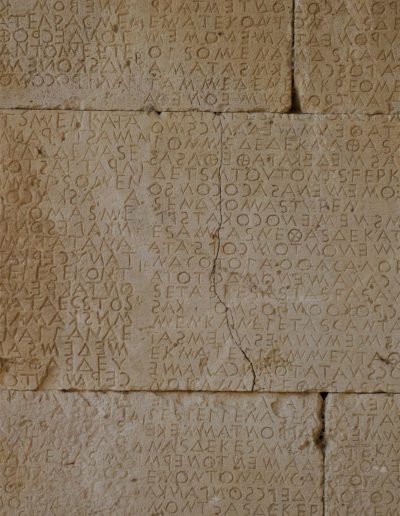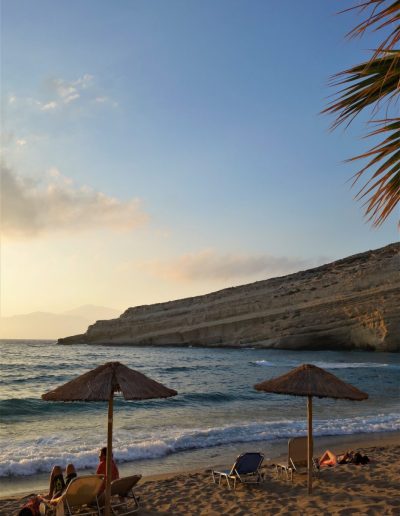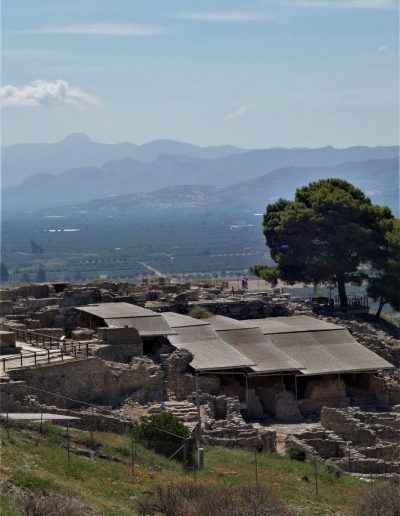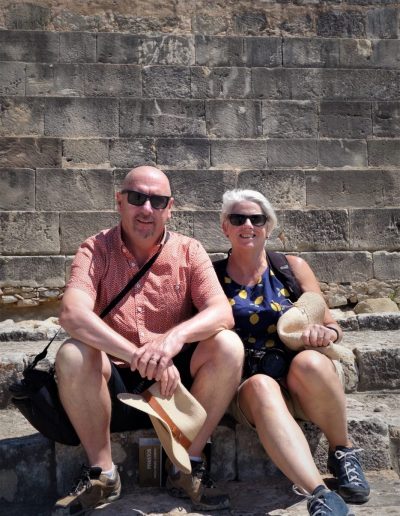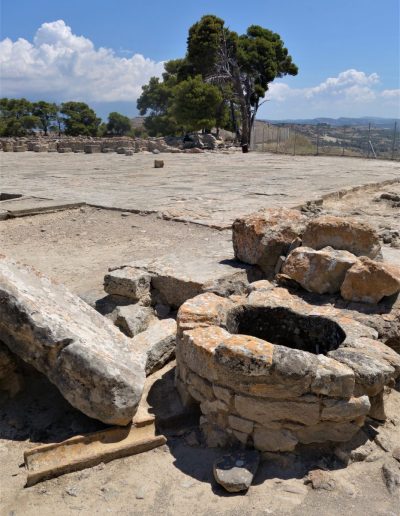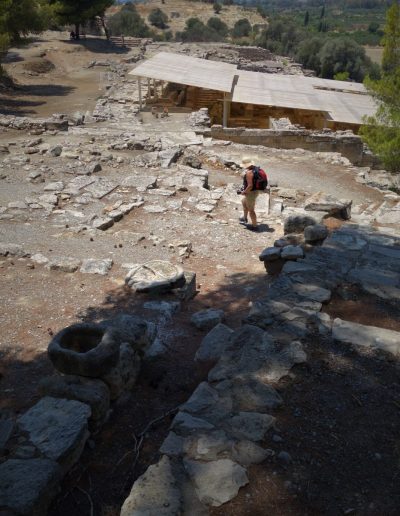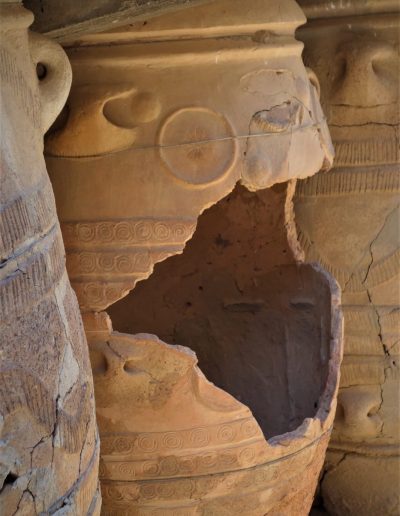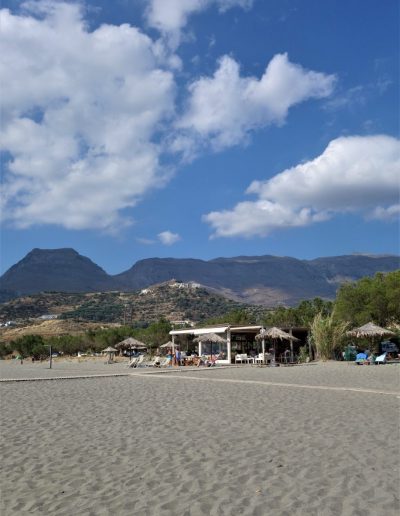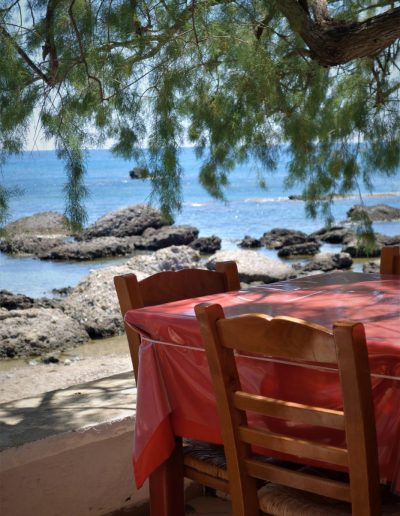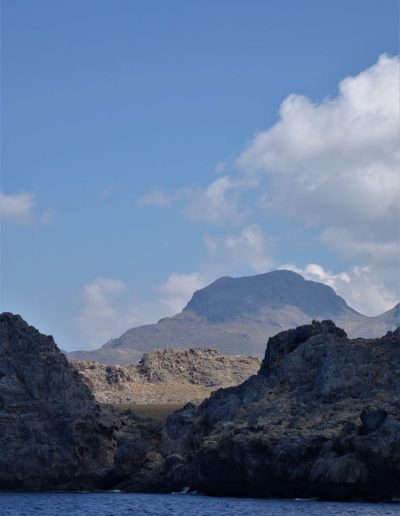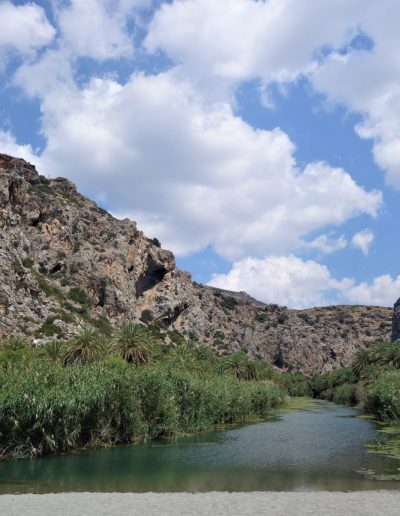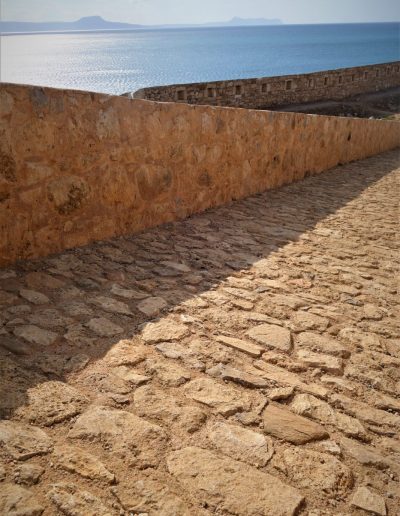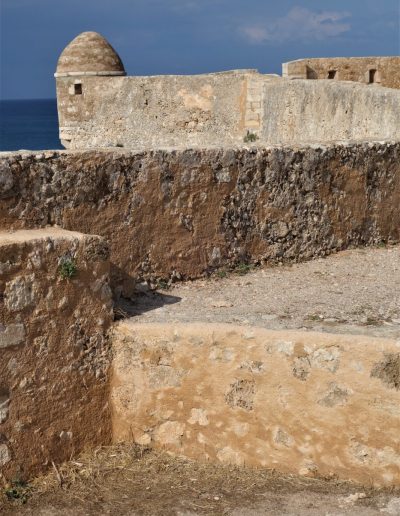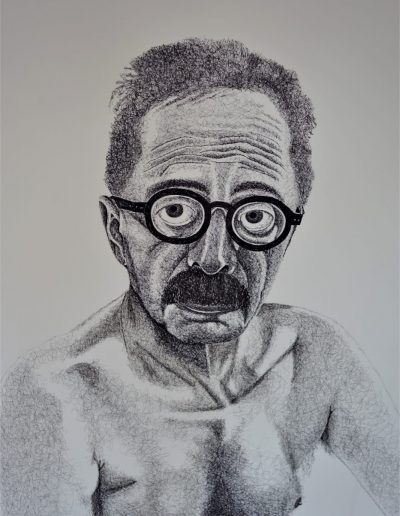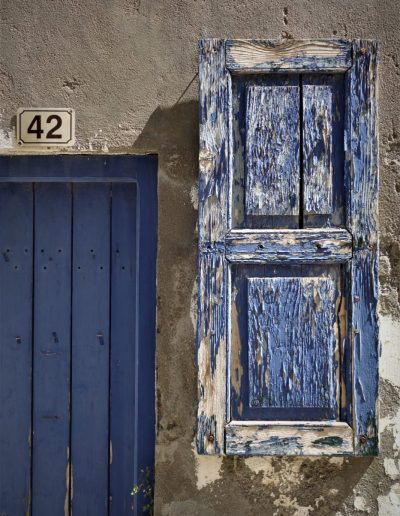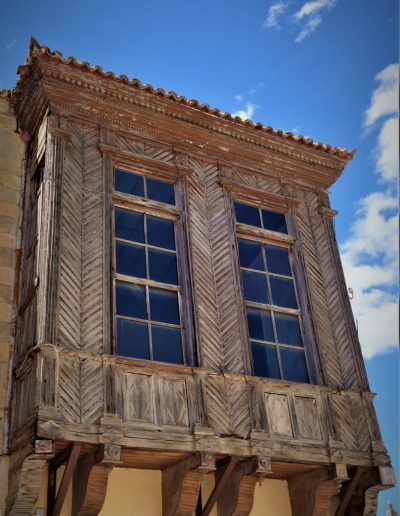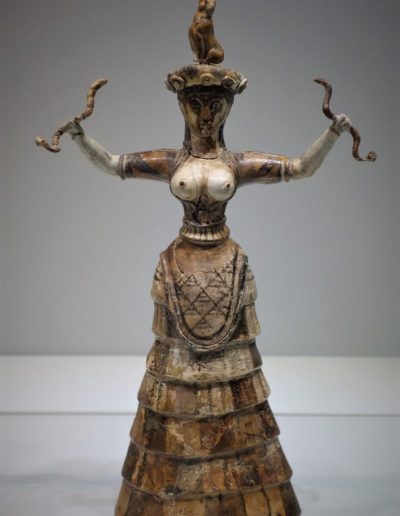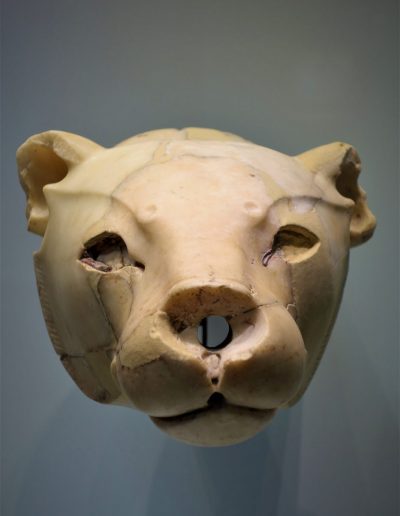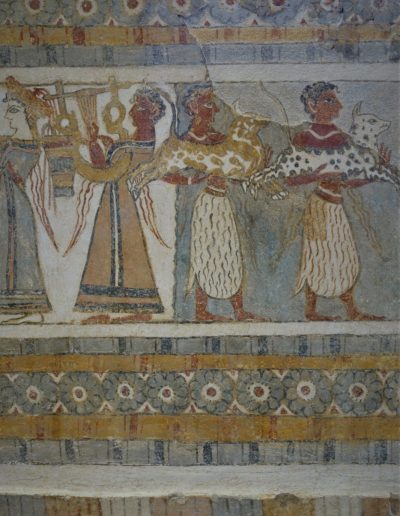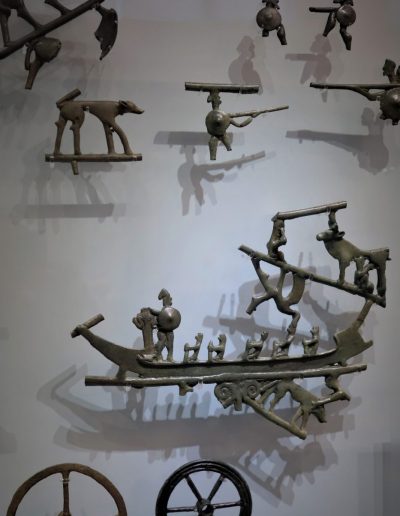- Flew from Thessaloniki to Heraklion on a Monday evening then picked up a hire car and drove to Agios Nikolaos as our first stop. The internal flight worked really well as a way to transition from northern Greece to the start of our island phase.
- We’d travelled to Western Crete in 2008 and wanted to focus on Central Crete this trip. Perhaps Eastern Crete next time? It’s a big island and quite culturally distinctive. We certainly didn’t regret making a second visit.
- We took 11 days to do a circuit of Central Crete. Four nights in Agios Nikolaos then an overnight in Matala en route to Plakias on the south coast, with some fine ancient sites along the way. Three nights in Plakias then back to the north coast at Rethmyno (two nights) before finishing with an overnight in Heraklion.
- In Agios Nikolaos we stayed in an apartment on Voulismeni Lake, fed by a small inlet off the Bay of Mirabello. The balcony was a lush spot for sundowners and for breakfast.
- Spent our first morning on the town beach called Kytroplatia then headed off to visit Spinalonga Island in the afternoon. We drove to Plaka then caught a small boat to the island. There’s a Venetian fortress on the highest point, built on top of an ancient fortress from the Hellenistic period. The Venetians also built extensive walls around the edge of the island and it was used as a leper colony in the early 20th C. It’s all very atmospheric and we had a lovely time walking around the perimeter and exploring the ruins.
- Next day we headed out to visit some sites nearby. First stop was the Dorian city of Lato with remains from 4-300 BC. Crete is mainly associated with Minoan civilisation so Lato is quite unusual. It’s a fabulous site in a remote mountain setting with views down to the coast. You enter through a main gate and walk up a walled main street with the remains of houses and shops on either side. It flattens out onto the central agora (public space) with a large cistern. Terraces lead up to a prytaneion (seat of government), temples and houses, with a theatre area further afield.
- From here we headed to the town of Krista and the Church of Panagia Kera adorned with Byzantine frescoes in excellent condition.
- Driving further east we visited the late Minoan settlement of Gournia. It’s ruins are draped over a hill quite close to the coast and it’s a pleasant place to wander along ancient streets and lanes.
- Dropped down to the nearby village of Pacheia Ammos for a swim and excellent taverna lunch. Got into a hilarious converation with the lady running the restaurant when she found out we were from Tasmania. Turned out that she knows the Cretan Greeks we know in Hobart, who come from Ierapetra about 15 kms away. Small world.
- The rest of the time in Agios Nikolaos was spent at the beach, eating and drinking and generally relaxing.
- When checking out we were charged a Special Accommodation Tax (S.A.T.) of 50 Euro cents per night, two Euros in total. It was introduced to help combat the austerity measures forced on Greece. Hope it makes a positive difference overall, though I reckon it would have cost much more than two Euros to administer this particular transaction.
- Crete is a wide island from east to west, narrow from north to south, and mountainous in the middle. Depending where you choose to cross, it doesn’t take long to get from the north to the south coast. We’d decided on Plakias as a base on the south coast but chose to break the journey from Agios Nikolaos with an overnight in Matala. This gave us time to visit the site of Gortyna and see Matala on the first day, then visit the sites of Phaestos and Agia Triada en route to Plakias on the second day.
- We set off mid-morning and stopped at Myrtos for a swim and some lunch. Next stop was the site of Gortyna. It’s said that the site has been occupied since Neolithic times, standing on a plain watered by the river Lethaeus. At its peak it had a population of perhaps 100,000. We found it a strange site. Much of it is locked away, being restored, or on the other side of the highway which is currently no access. It’s most visible remains are the Basilica of St Titus and the huge stone tablets inscribed with the Codex of Gortyna. It felt like it could be an awesome site if fully excavated and protected.
- Arrived in Matala on Friday evening to find it was the start of a three-day beach festival. The place was heaving, not at all what we’d expected. Matala is part of Greek mythology and was both a Minoan port and a Roman port. The Romans used its cliffside caves as tombs. In the 1960s the caves became a hippie hangout and Joni Mitchell made them famous through her song ‘Carey’ from the Blue album. Seems like it remains a ‘go to’ place. I heard the DJ winding up the crowd at 4:30am and think it was finally quiet at 6am. We sought out breakfast with the walking wounded and headed off as soon as we could. Not our finest moment of travel planning.
- Phaestos was the second city of Minoan Crete, behind Knossos. It’s perhaps most famous for the Phaestos Disc (held in the Heraklion Archaeological Museum), an intruiging artefact dated to around 1,400 BC. The site sits atop a ridge separating the plains of Messara (inland ) and Debaki (coastal). We loved it and spent several hours exploring it in full.
- Nearby Agia Triada is much smaller but also worth a visit. Many of the finds from this site are also in the Heraklion Museum, including a beautiful painted sarcophagus.
- Drove on to Plakias that evening and settled in to our apartment for a few days. It was a short walk down to the beach with a nice cafe and a very decent restaurant, and a longer walk/ short drive to the town centre for all other amenities. The guy who owned the apartment left us eggs from his chickens and oil from his olive grove. All good. We did a boat trip to Preveli Beach on one of the days. It sits at the mouth of the Kissano Faraggi river, with a palm-lined gorge reaching back into the mountains. It is very popular but we had a fun day swimming, drying off, seeking shade, walking, eating and drinking. And seeing the coast and mountains from the boat, both going there and coming home, was spectacular.
- Drove north to Rethmyno for a couple of nights. It has a long sandy beach lined with hotels and resorts that slice the coast into a series of sunbed concessions. We stayed in the old town and found walking around the Venetian fortress (fortezza) and wandering the backstreets and lanes to be more our style. The fortezza is huge and it’s a great place for a late afternoon/ early evening promenade. In one of the old buildings there was an exhibition by the artist Cryssoula Skepetzi. After some beach time on the second day we spent an afternoon wandering the old town. We also found an excellent restaurant that we ate at a couple of times.
- Drove on to Heraklion next morning, dropped the hire car at the airport and headed into town. Our focus was the Archaeological Museum. It was being renovated when we first visited Crete in 2008, and though I’d seen the finished version on a work trip in 2015, Julie hadn’t. It’s a wonderful facility and we got a lot more out of it having visited not just Knossos but also Phaestos, Agia Triada and Gortyna. Ended the day with a fine seafood dinner on the waterfront. It’s always good to leave a place with the feeling that you’d like to come back. We’d definitely come back to Crete..

